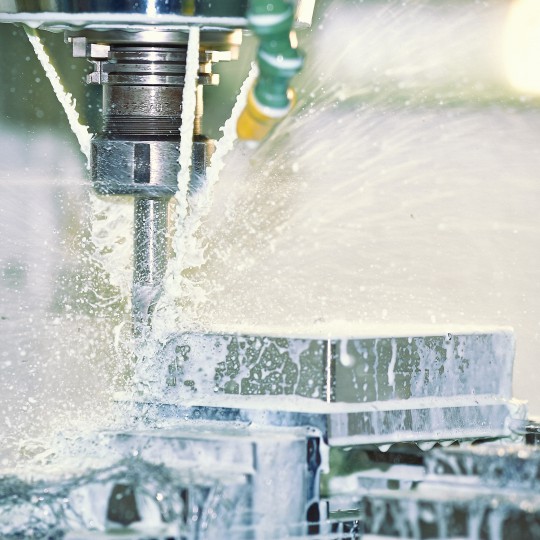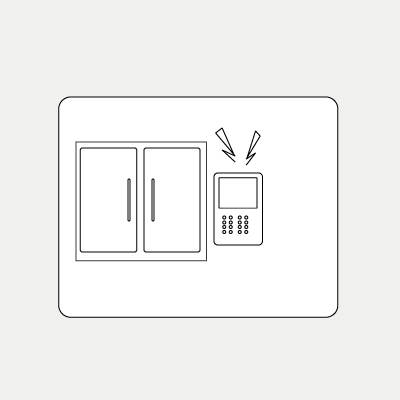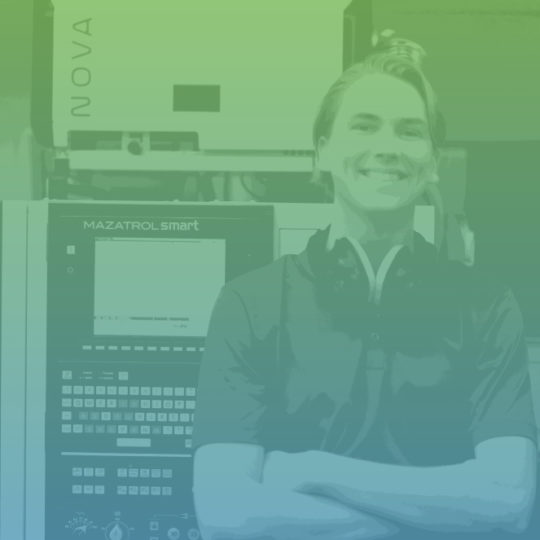HEALTH AND SAFETY
Clean air is a key priority when it comes to a healthy work environment.
Not taking care of the oil mist generated in the machining process involves serious health risks for operators working in the workshop. Fortunately, we know exactly how the problem can be solved.
What is oil mist?
What is oil mist?
Oil mist is small airborne particles formed in the processing of, for example, metal. Besides oil, it contains (or water and oil for a cutting fluid) various additives such as rust inhibitors and other chemicals to make it purer. It also has contaminations such as metal pieces, tramp oil and bacteria (especially now when the EU has sharply restricted the use of germicides, called biocides). The contaminated air therefore contains a mixture of harmless substances but also very toxic ones.
The particle size varies depending on several factors such as spindle speed, coolant pressure and viscosity of oil, but it is roughly around 0.5-2 μm at a normally distributed application. Particles of this size are airborne and spread in the workshop as soon as the doors of the machine tool open. Since the particles are so small (1 micron = 1/1000 mm) they can penetrate very far into the lungs and are therefore very harmful for your health.

Oil mist is small airborne particles formed in the processing of, for example, metal. Besides oil, it contains (or water and oil for a cutting fluid) various additives such as rust inhibitors and other chemicals to make it purer. It also has contaminations such as metal pieces, tramp oil and bacteria (especially now when the EU has sharply restricted the use of germicides, called biocides). The contaminated air therefore contains a mixture of harmless substances but also very toxic ones.
The particle size varies depending on several factors such as spindle speed, coolant pressure and viscosity of oil, but it is roughly around 0.5-2 μm at a normally distributed application. Particles of this size are airborne and spread in the workshop as soon as the doors of the machine tool open. Since the particles are so small (1 micron = 1/1000 mm) they can penetrate very far into the lungs and are therefore very harmful for your health.
Problems with oil mist

Health hazards
Regular exposure to oil mist means major health risks - ranging from eczema to respiratory problems and at worst cancer.

Slippery surfaces
Oil mist that is allowed to spread in the workshop increase the risk of damage due to increased risk of slipping.

Cleaning
The oil mist settles as a coating throughout the workshop and requires regular cleaning.

Damage on equipment
A coating of oil mist may cause damage to electrical equipment, ventilation systems and machine tools.
Choose a clean and safe working environment.
Choose a clean and safe working environment.
An oil mist eliminator from 3nine effectively cleans processed air to 99.95% particle free, which far surpasses the OSHA limit, and guarantees a clean and safe working environment.
NIOSH:
Workers can be exposed to MWFs by inhaling aerosols (mists) and by skin contact with the fluid. Skin contact occurs by dipping the hands into the fluid, splashes, or handling workpieces coated with the fluids. The amount of mist generated (and the resulting level of exposure) depends on many factors: the type of MWF and its application process; the MWF temperature; the specific machining or grinding operation; the presence of splash guarding; and the effectiveness of the ventilation system in capturing and removing the mist.
Substantial scientific evidence indicates that workers currently exposed to MWF aerosols have an increased risk of respiratory [lung] and skin diseases. These health effects vary based on the type of MWF, route of exposure, concentration, and length of exposure.

An oil mist eliminator from 3nine effectively cleans processed air to 99.95% particle free, which far surpasses the OSHA limit, and guarantees a clean and safe working environment.
NIOSH:
Workers can be exposed to MWFs by inhaling aerosols (mists) and by skin contact with the fluid. Skin contact occurs by dipping the hands into the fluid, splashes, or handling workpieces coated with the fluids. The amount of mist generated (and the resulting level of exposure) depends on many factors: the type of MWF and its application process; the MWF temperature; the specific machining or grinding operation; the presence of splash guarding; and the effectiveness of the ventilation system in capturing and removing the mist.
Substantial scientific evidence indicates that workers currently exposed to MWF aerosols have an increased risk of respiratory [lung] and skin diseases. These health effects vary based on the type of MWF, route of exposure, concentration, and length of exposure.